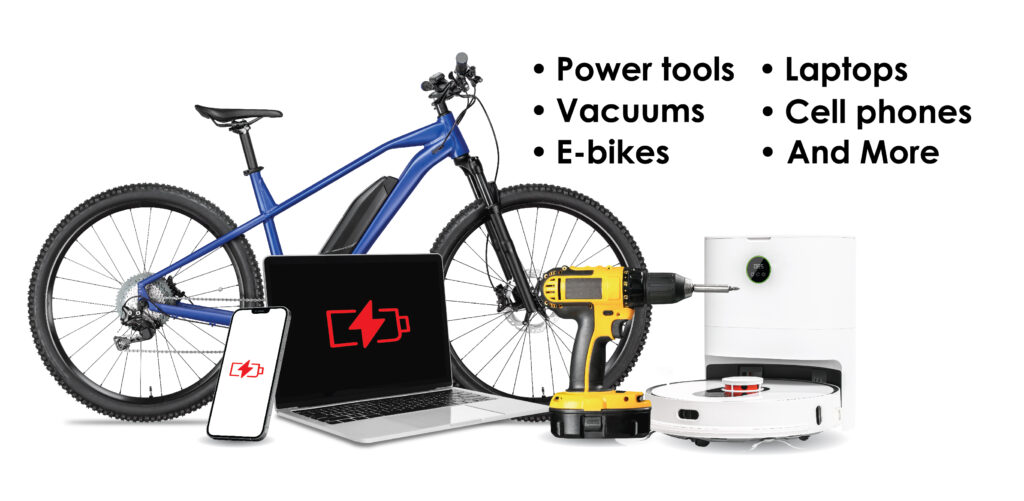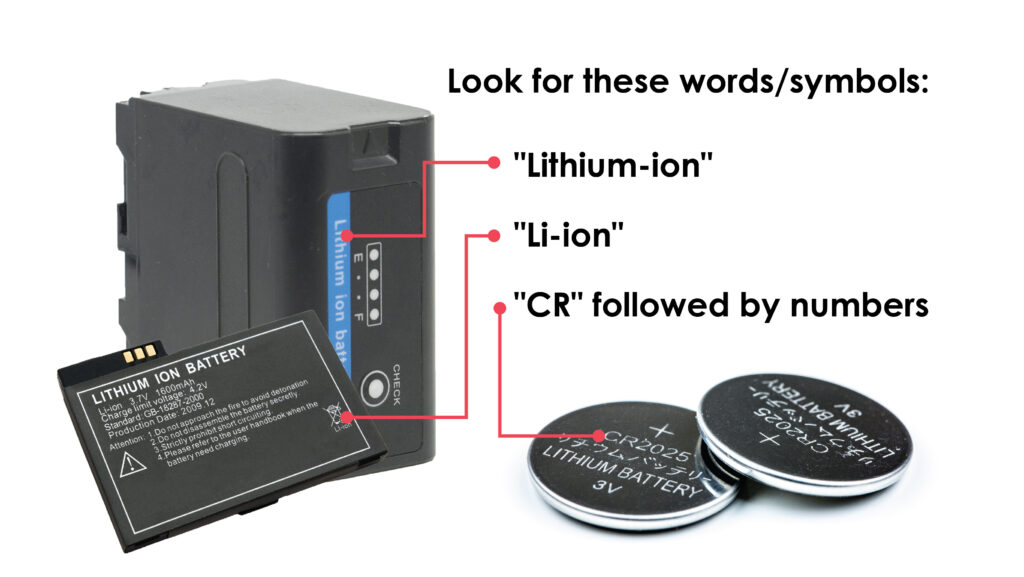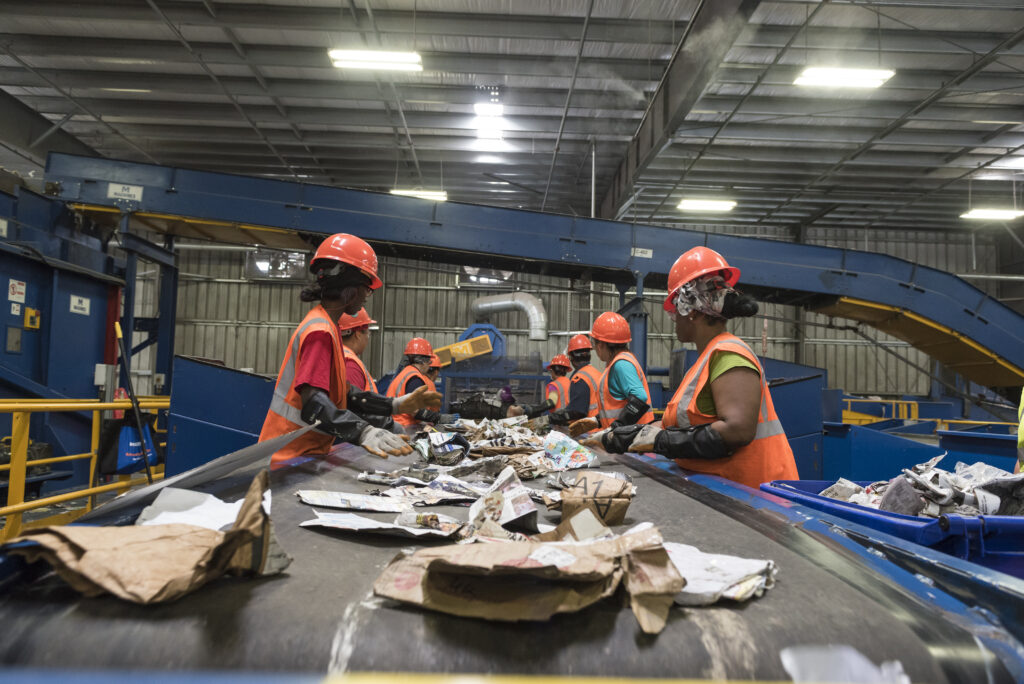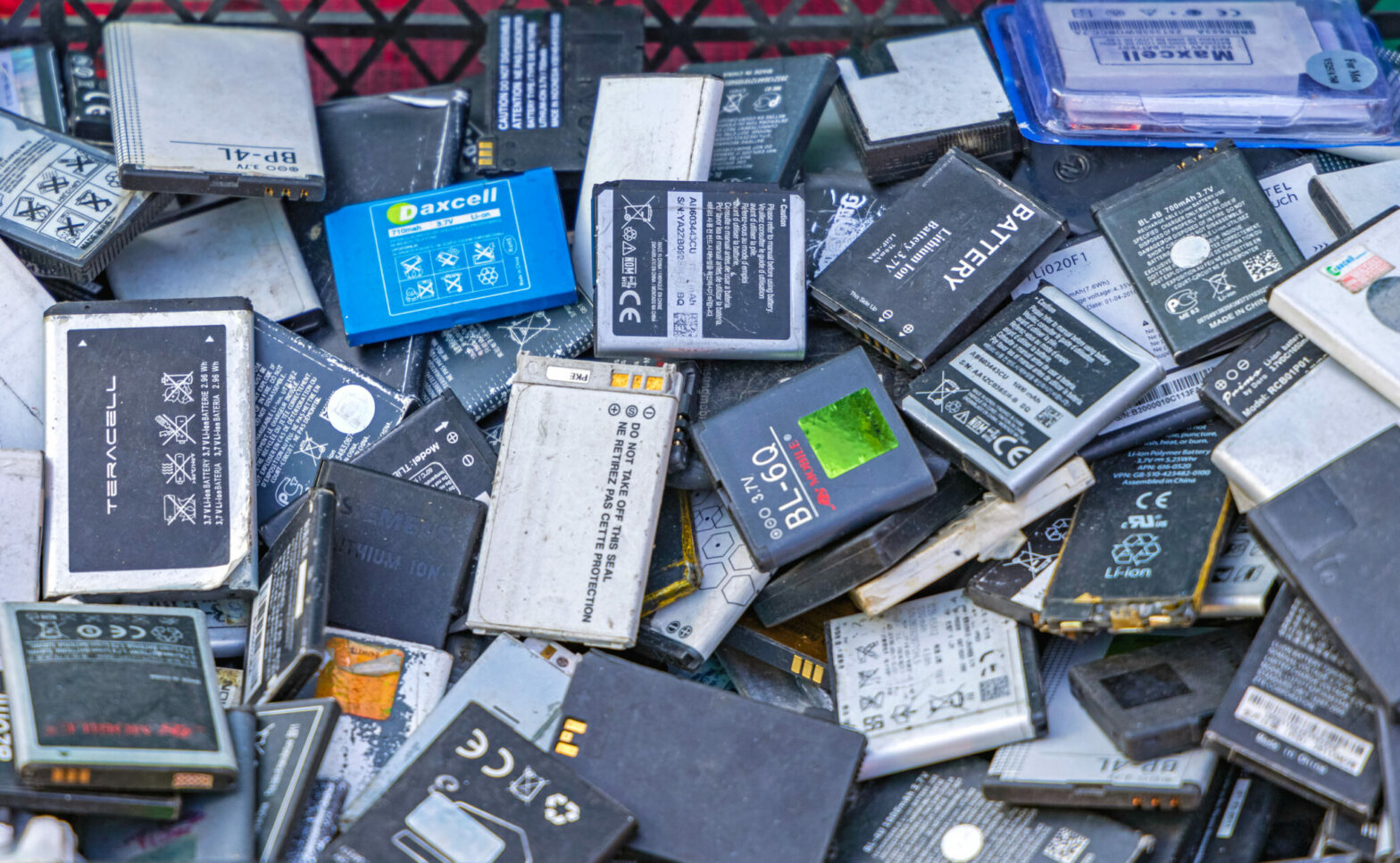Putting safety first is a guiding principle for Pratt Industries. We emphasize and train employees on safe workplace practices, and we provide educational resources to help promote safety both at work and home. For National Safety Month in June, we want to share information on how to properly use and dispose of a popular household item, lithium- ion batteries.
According to the EPA, lithium-ion batteries are often found in products around the home, including: electronics, toys, wireless headphones, handheld power tools, appliances and other items. The EPA also notes that devices containing these batteries should not go in household garbage or recycling bins. The reason is because if the battery, or electronic device that contains them, is disposed of in the trash or a recycling bin, it may become damaged or crushed and create a fire hazard. According to an EPA report, more than 240 fires were caused by lithium-ion batteries at 64 waste management and recycling facilities across the nation between 2013 and 2020. 1
To help us better understand lithium-ion batteries and how to properly dispose of them, we recently sat down with Pratt’s Corporate Safety Director, Ryan Peart and Michael Altobelli, Vice President of Pratt Recycling’s northeast region which serves the New York City Department of Sanitation among others.
Before we discuss what lithium ion batteries are and how to dispose of them, what is the one thing that people should learn from this article?
People should understand that when lithium-ion batteries are not disposed of properly, these batteries have the potential to cause fires that may injure people, destroy property and disrupt our recycling system. If we can better explain what lithium-ion batteries are, where to find them and how to dispose of them properly, we can help ensure the safety of our Pratt Recycling workers and the general public.
Many people may be surprised by just how many products use them and that they may be in many products that they have at home right now. So just to clarify, you are not recommending that we not use lithium-ion batteries?
Not at all. Lithium-ion batteries are extremely common and found in items that we all use on a daily basis. You can find them in everything from cordless power tools and vacuums to e-bikes and laptop computers. Many of our cell phones also use lithium-ion batteries for their power. They have a lot of benefits and uses. We are just advocating for proper disposal of these batteries once you are done with them or the devices they may be inside.

How can you identify these batteries or potential devices they may be inside?
Products that include lithium-ion batteries typically list their chemical makeup on the battery’s case, the product instruction manual or in product markings. Some larger products actually include symbols or the words “Li-ion” on them. Smaller, button type lithium-ion batteries include the letters “CR” followed by a series of numbers.

Let’s talk about rechargeable batteries. Many people may not realize that there is more than one type of rechargeable battery. Can you provide a little background on this?
In the past, rechargeable batteries were mostly made of nickel cadmium. While they were rechargeable, over their lifetimes, they would hold less and less charge. So eventually the battery would become completely dead with no charge left at all. So if a dead nickel cadmium battery were placed in the garbage or recycling bin, there was little to no charge to ignite a fire.
Lithium-ion batteries are different because they hold their charge for very long periods. Therefore, they are more likely to ignite due to damage or pressure that may occur during the recovery process, and that ignition can cause a fire in a home, in a waste recovery truck or at a facility.
Is there something specific that occurs that triggers the fire?
A number of different factors can cause the batteries to ignite, from their terminals touching metal, to pressure placed on them during the recovery and transportation process to chemical reactions within the battery.
We should all remember that throughout the entire recycling and sorting process, pressure of some sort is placed on the items. When items are picked up from the curb and placed in a truck that has a packer in it – there’s pressure on the battery. When recovered items are dropped on a tipping floor and pushed around by heavy machinery on a recycling center floor – there’s pressure. In every step of the process, the battery could possibly be damaged, so all of those actions increase the chance that the lithium-ion battery could ignite and cause a fire.
Also, some batteries are so small it can be difficult to find them in the recycling stream. They may be the size of a button, so recycling workers or sorting machinery may not detect them to pull these batteries from the recovered materials.
Are you finding that these batteries are ending up in curbside recycling bins in higher numbers, and why do you think that is happening?
Yes. Many lithium-ion batteries include a recycle symbol on the battery or product packaging, which can be confusing to consumers. When people see that symbol, they assume these batteries may be recycled in the same way that paper, aluminum or plastics are recycled, and that’s not the case. For safety reasons, lithium-ion batteries must be disposed of in a different manner.
Additionally, some people may not understand the difference between lithium-ion batteries and single-use alkaline batteries that we use in things like flashlights or radios. Only alkaline batteries can safely be disposed of in the trash.
What impacts can lithium-ion batteries have on recycling centers?
First, it is important to remind people that there are many steps in the recycling process. In order to be sorted appropriately, recovered materials actually come into a workplace, like our Pratt Recycling centers, where materials are handled by various people and machines.
Once recycling leaves the curbside, it is handled by a number of people including the truck drivers, drivers of large loaders who move the materials around, workers who sort the materials and many others. When these batteries are in the recycling stream, they pose an immediate physical danger to these workers should the battery ignite.
Additionally, if a battery catches fire in a recycling center, it could mean that the center must close for a period of time which endangers workers’ livelihoods and may cause delays in community recovery services. So, you can see the importance of recognizing lithium-ion batteries and handling them properly.

Knowing what we do about the dangers of placing lithium-ion batteries in recycling or our trash, how should people dispose of them?
The best option is to take these batteries to a battery redemption center. A great resource to locate such centers is Call2Recycle.org. This organization provides an easy-to-use search function where people can find their closest disposal location. People can also contact their recycling vendor or local community for information on how to dispose of lithium-ion batteries locally.
How do you think we can bring more awareness to these batteries and the potential dangers they can cause to our recycling stream if not appropriately disposed of?
Education is key. In New York, we are part of a team working closely with the Product Stewardship Institute (PSI) to create more official guidelines and regulations on how to dispose of these batteries so that they are removed from the waste/recycling stream. Similar initiatives are taking place in other communities throughout the country. Additionally, our teams work closely with our recycling partners to better educate citizens on the proper disposal of lithium-ion batteries through social media initiatives, advertising and other communications channels. We understand that the change will not happen overnight, but we hope, as we bring more visibility to the issue, that consumers will think before disposing of these batteries in their household recycling.
As an employer of more than 400 team members who work in our recycling facilities nationwide, we focus on safety continuously. To ensure a safe work environment for them, we are providing educational resources on what these batteries are, how to identify them and the protocols to take if the batteries are found in our recycling.
We are also investigating new technologies that utilize X-rays and cameras to identify these batteries as recovered items are being sorted. These technologies are still being developed, so it will be a few years before they are widely used. In the meantime, we are providing employee training and working with our recycling partners to educate the public on the proper way to dispose of lithium-ion batteries.
Additional Resources
- Facts on Lithium Ion Batteries
- Lithium Ion Battery Disposal Locations
- Call2Recycle.org (1-877-2-RECYCLE)
- Earth911 (Use Lithium-ion batteries in the search bar.)
